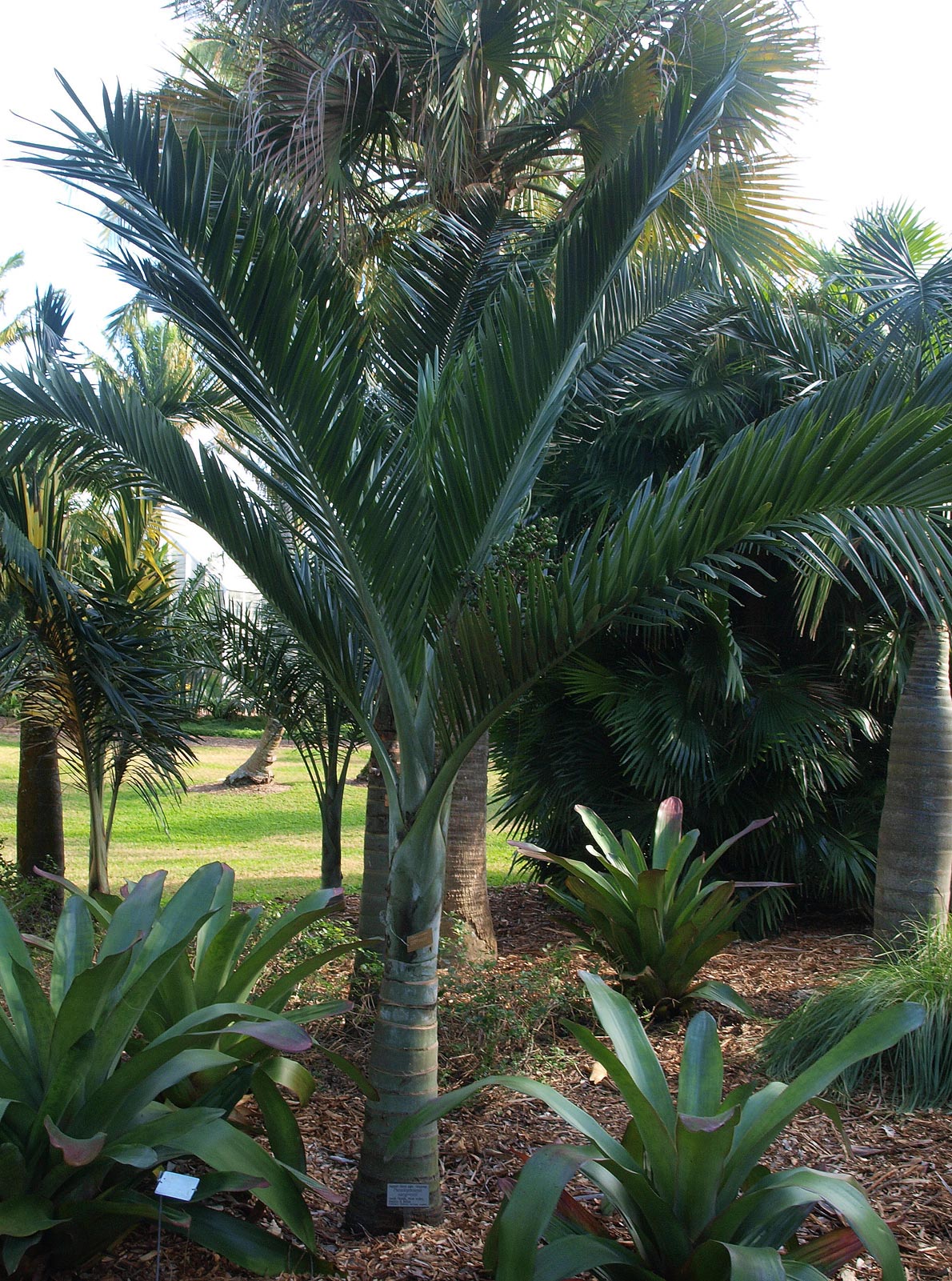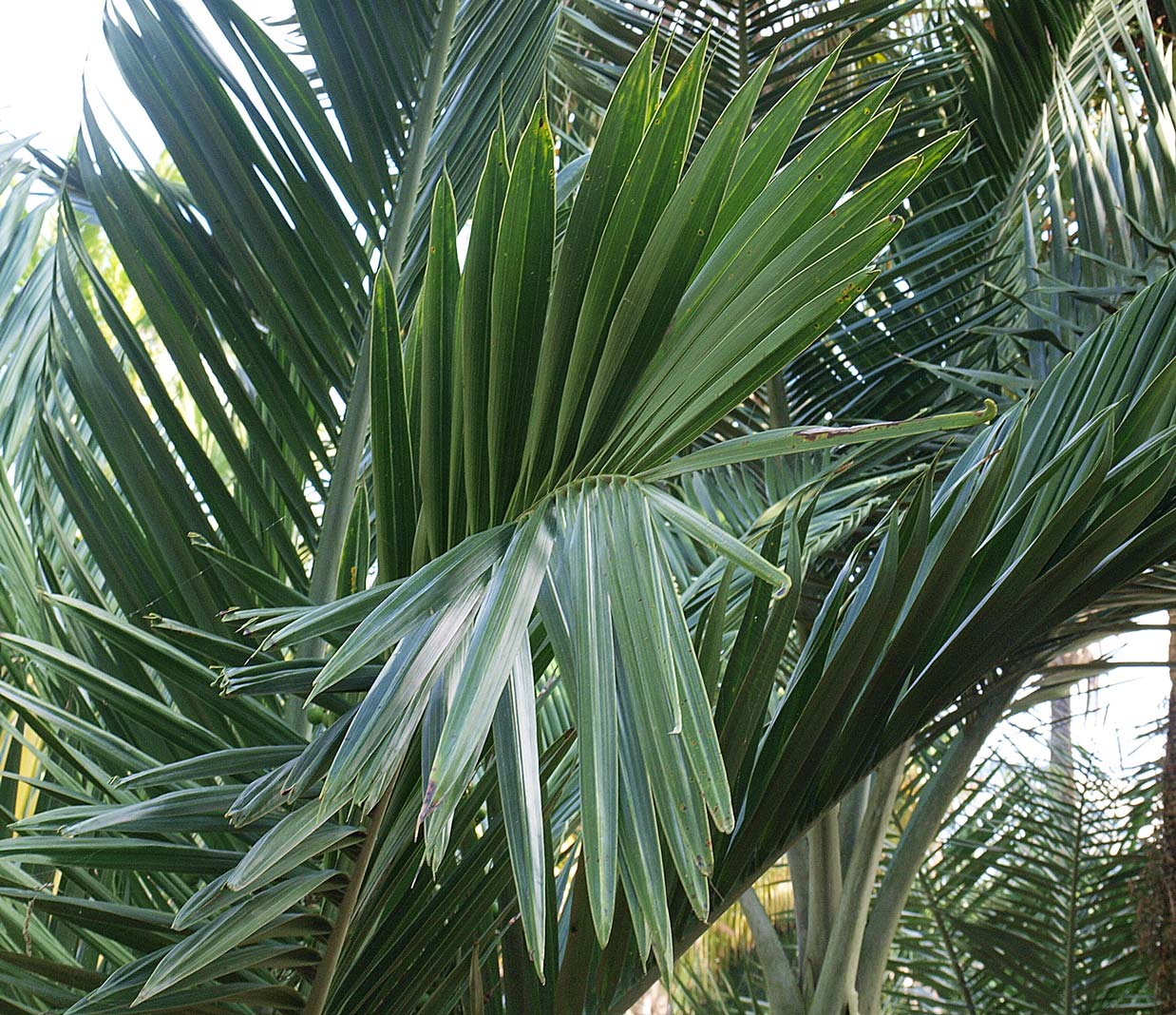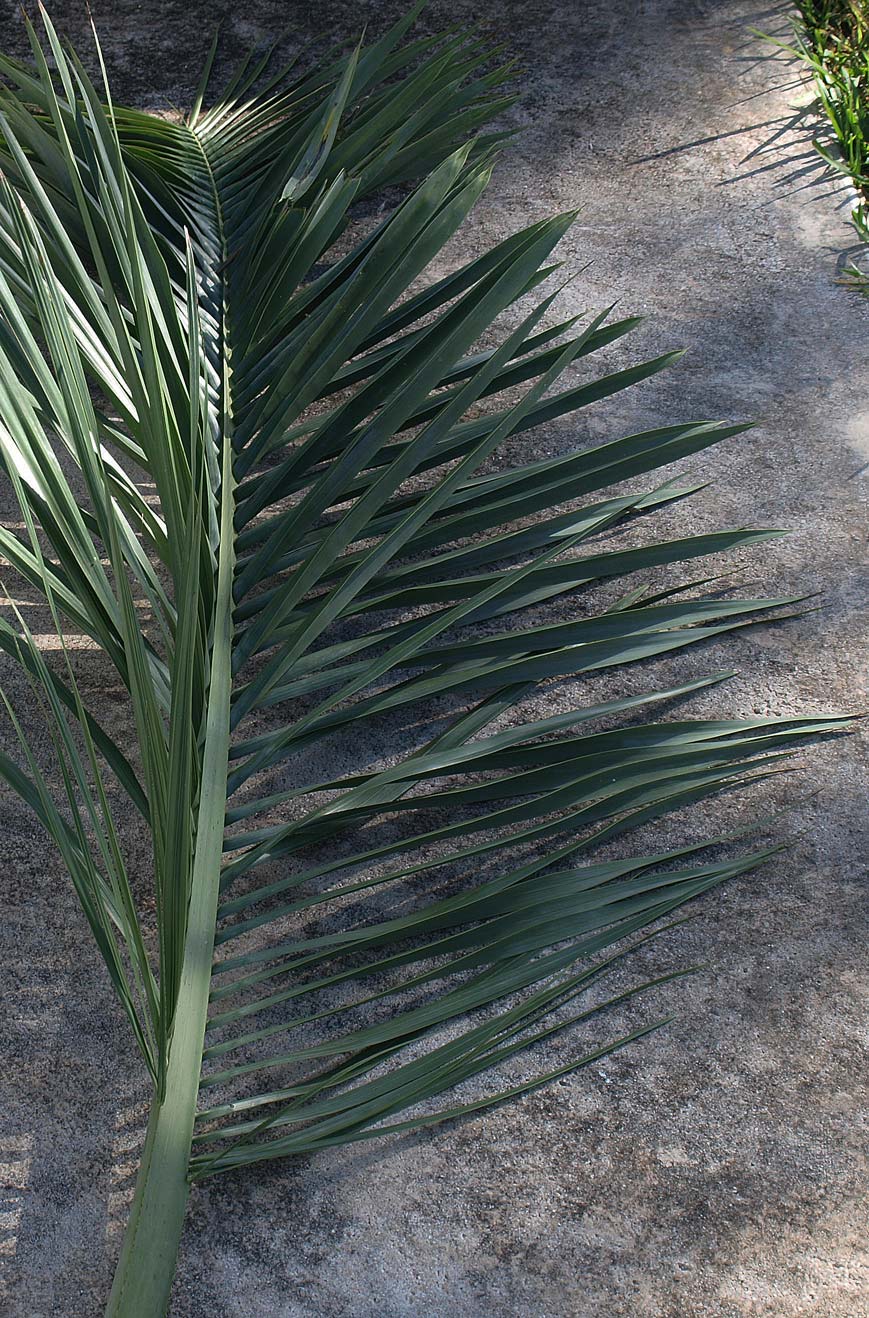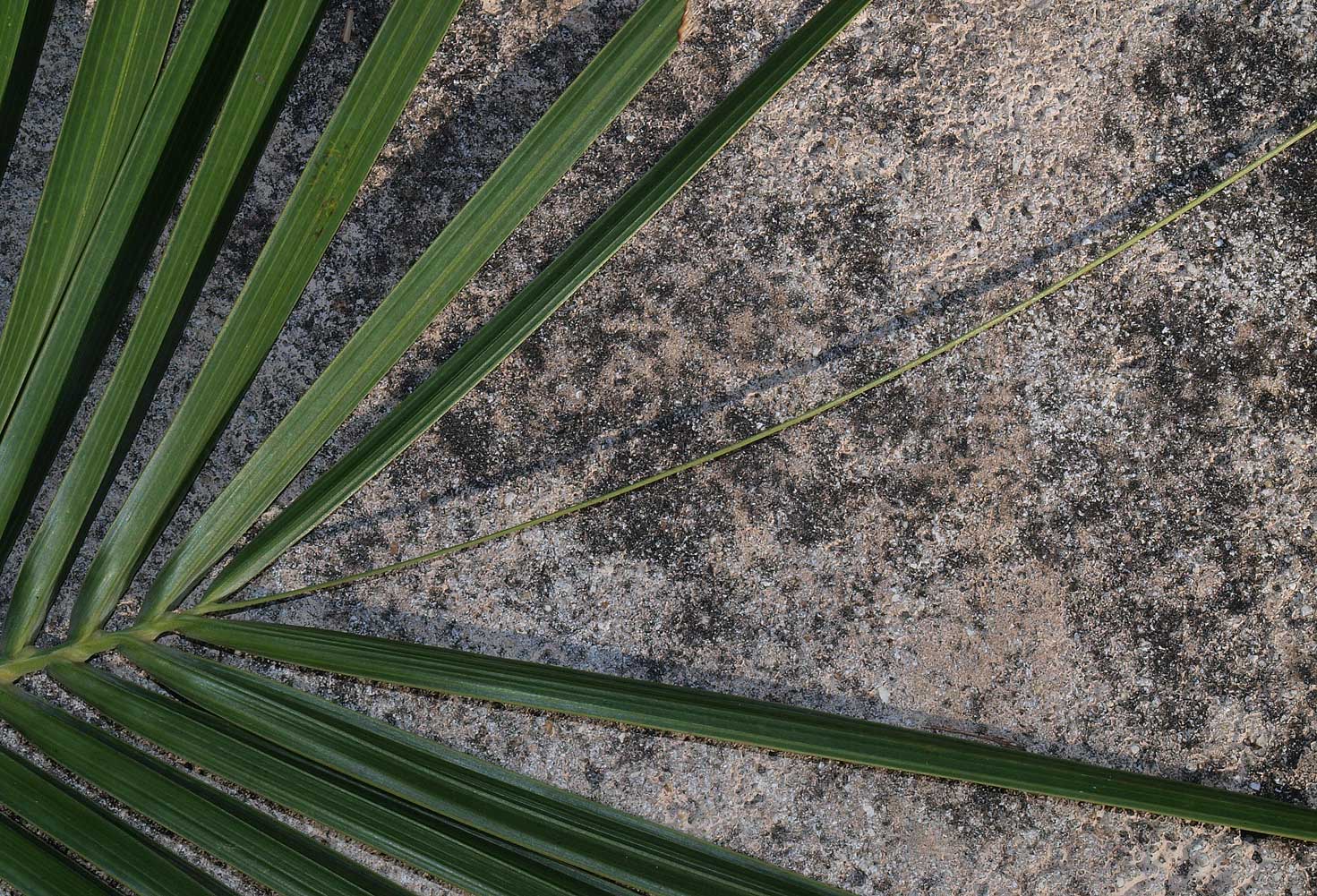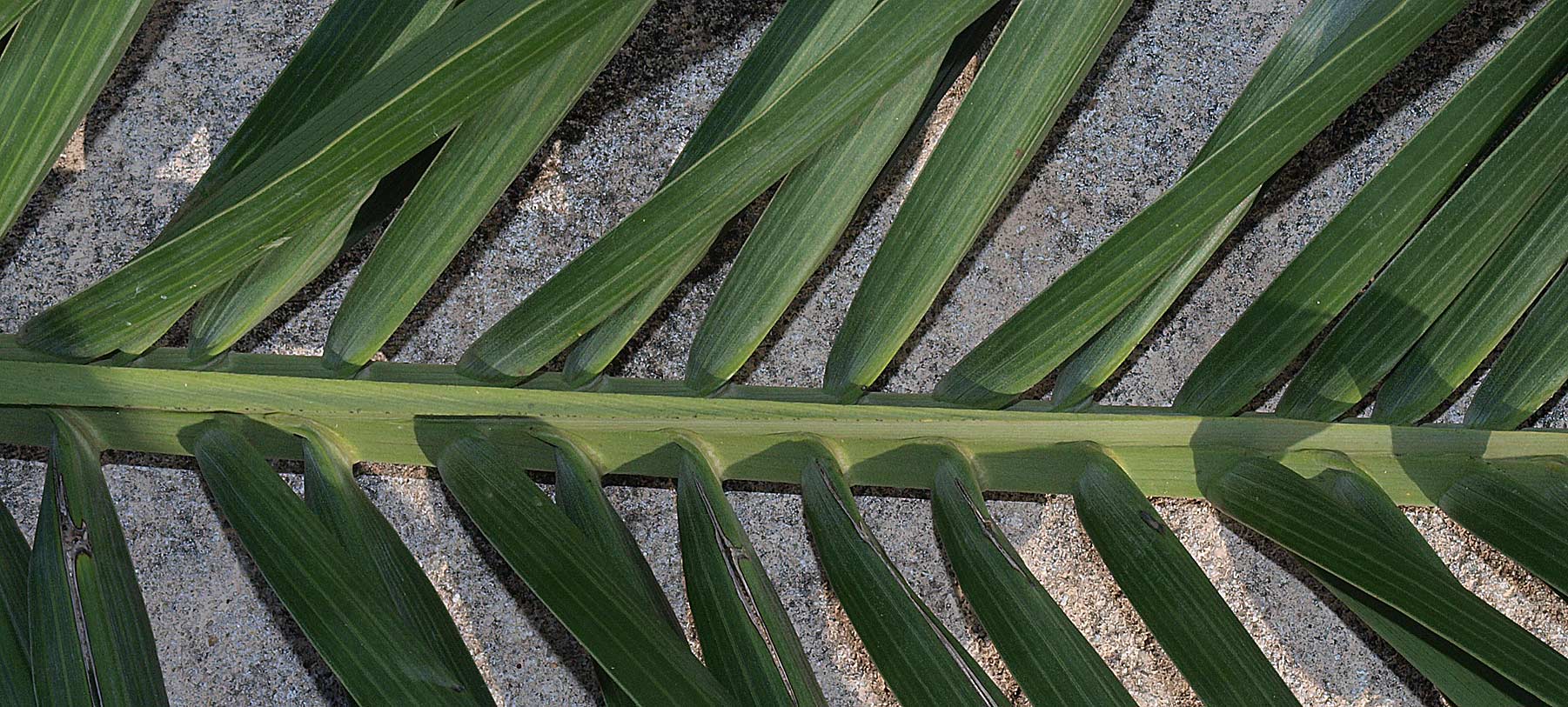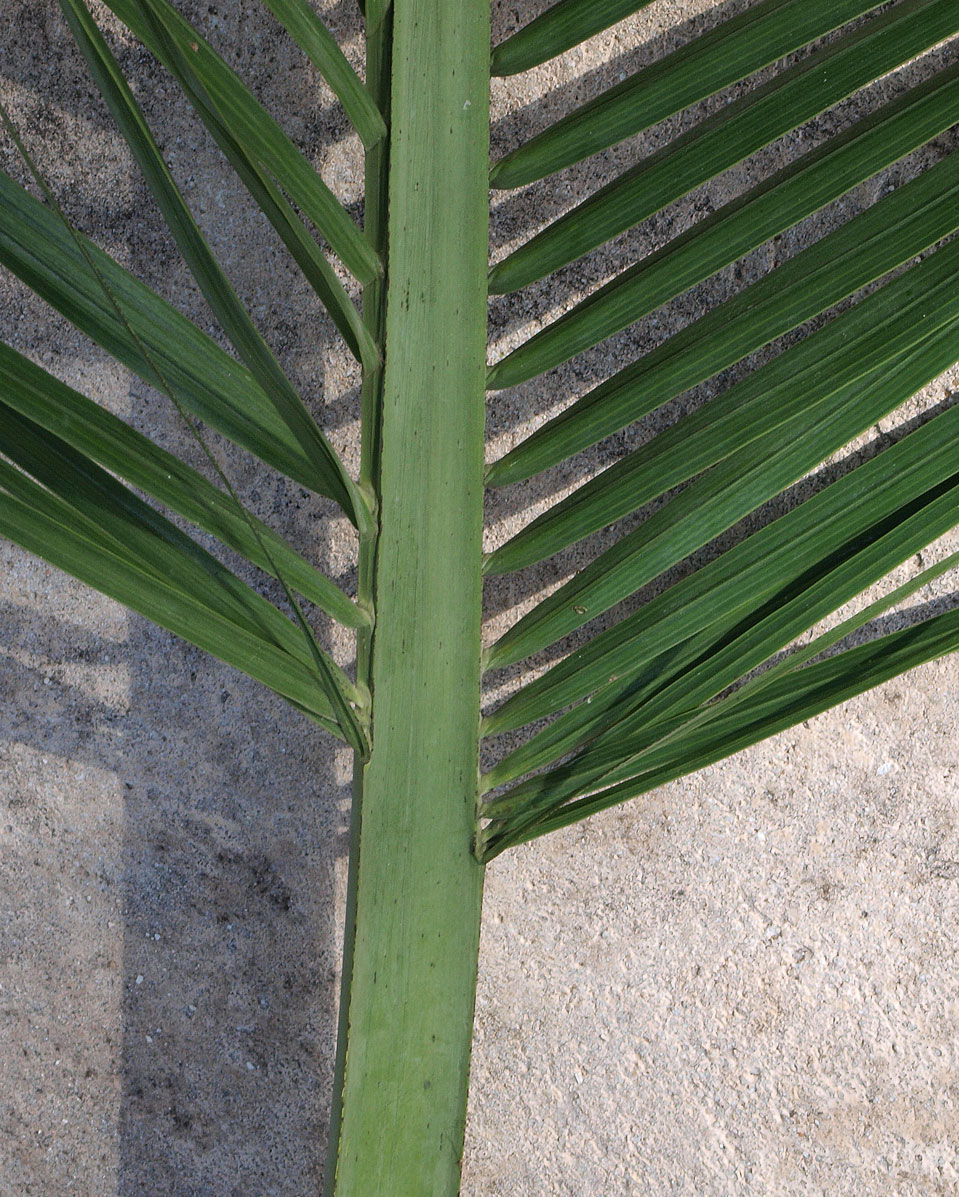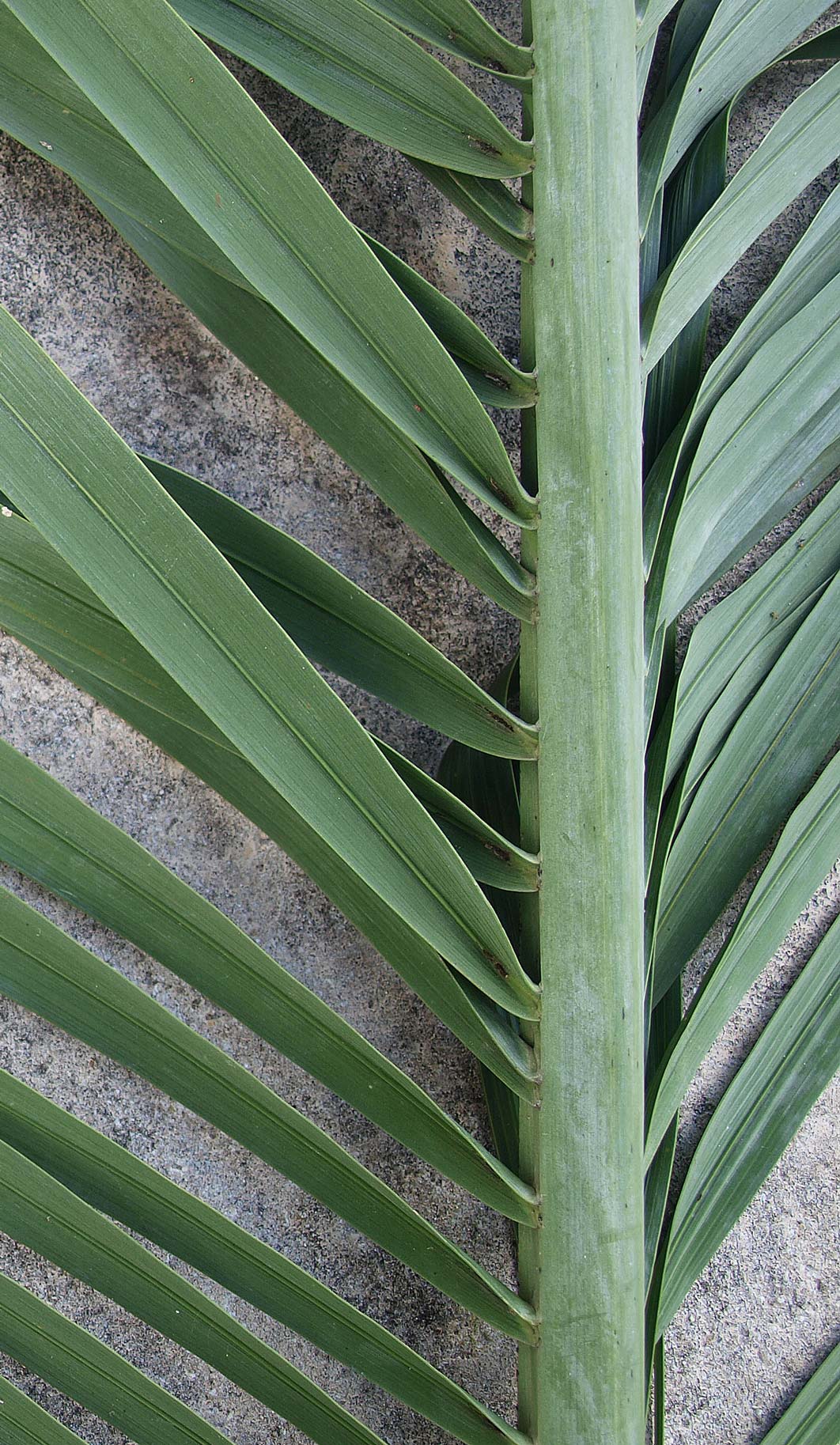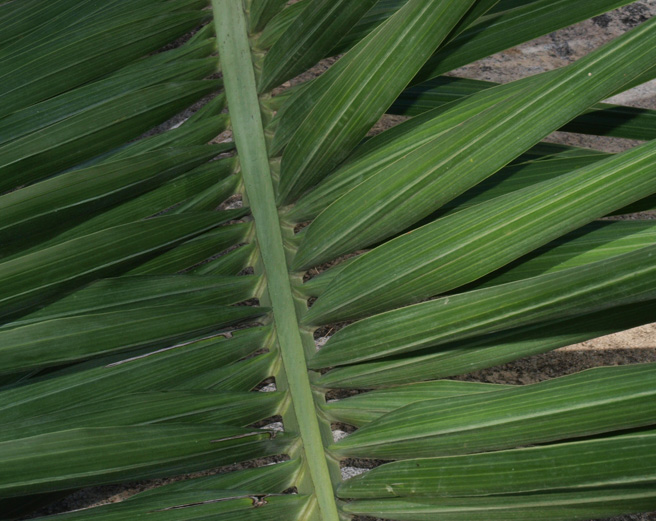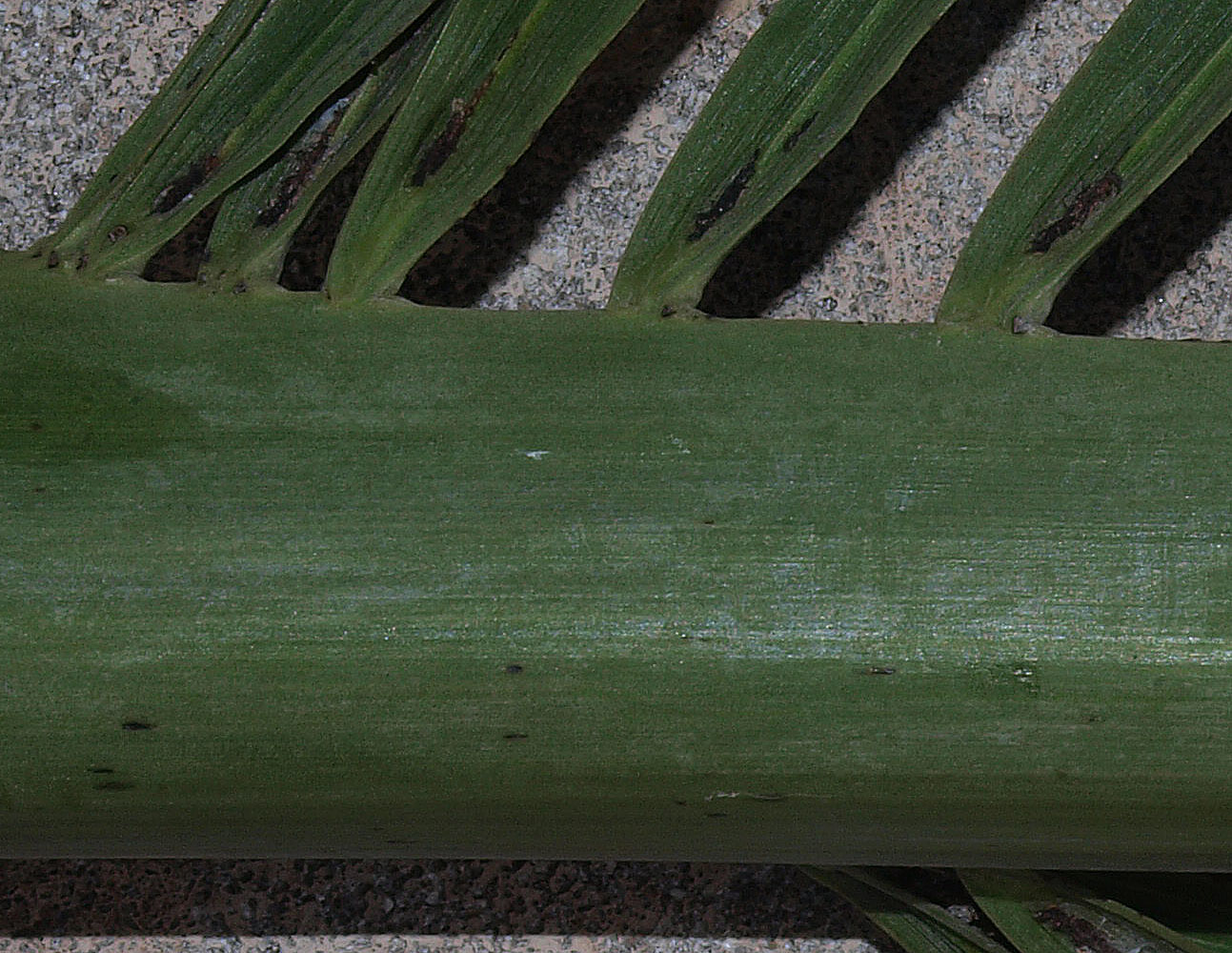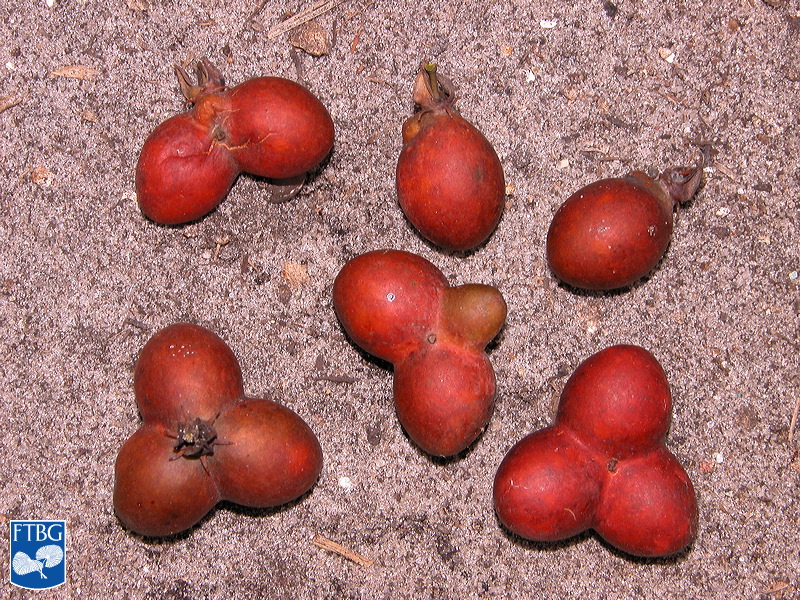Pseudophoenix sargentii
|
Pseudophoenix sargentii habit |
|
Pseudophoenix sargentii canopy with fruit. Photograph courtesy of Fairchild Tropical Botanical Garden, Guide to Palms http://palmguide.org/index.php |
|
Pseudophoenix sargentii leaf scar rings |
|
Pseudophoenix sargentii leaf |
|
Pseudophoenix sargentii leaflets |
|
Pseudophoenix sargentii leaf apex |
|
Pseudophoenix sargentii leaf rachis |
|
Pseudophoenix sargentii leaf with basal leaflets |
|
Pseudophoenix sargentii leaflets with abaxial rachis |
|
Pseudophoenix sargentii leaflets with adaxial rachis |
|
Pseudophoenix sargentii leaflets with abaxial ramenta |
|
Pseudophoenix sargentii leaflets with abaxial ramenta (photo of dried specimen) |
|
Pseudophoenix sargentii fruit. Photograph courtesy of Fairchild Tropical Botanical Garden, Guide to Palms http://palmguide.org/index.php |
Common name
buccaneer palm, Sargent's cherry palm
Description
Stems: Solitary, erect to 8 m tall and 30 cm in diameter, bulging slightly at variable points; young stems are gray-green, turning gray with age; ring scars are prominent, raised, and brown. Leaves: Pinnatepinnate:
like a feather; palms with pinnate leaves usually have compound leaflets attached to a rachis, although a pinnate leaf may be entire with pinnate veins (e.g., <em>Chamaedorea metallica</em>)
, reduplicatereduplicate:
Most palm leaflets or leaf segments are obviously folded. If the folds create an upside-down V-shape, with the margins lower than the midrib (so that rain might "run off the roof"), the folding is reduplicate.
, with a twisting rachisrachis:
an extension of the petiole through the blade of a pinnate leaf to which leaflets are attached
, to 3 m long, with linearlinear:
term to describe leaves and leaflets that are narrow with nearly parallel margins; like a line
, blue-green leaflets irregularly arranged in groups of three to five, at divergent angles, held in a more or less plumoseplumose:
softly feathered
, V-shape. The somewhat open, short, stout crown shaftcrown shaft:
a cylinder of clasping leaf sheaths toward the apex of the stem, found in some pinnate-leaved palms (e.g., <em>Wodyetia bifurcata</em>)
is formed from waxy, gray-green or blue-green leafleaf:
in palms -- the leaf blade (which is usually divided into leaflets or leaf segments), the petiole (or leaf stalk) and the sheath (which forms the attachment of the leaf to the stem)
sheaths. The leaflets have brown scales below, acute tips and obvious secondary veins. There are no spines. Flowers and fruit: Inflorescences maybe erect or arching, to 1 m long, and branched to five orders. Bisexual flowers are produced at the base of the inflorescenceinflorescence:
the reproductive structure of a flowering plant, including palms, consisting of flowers and associated bracts
, with staminatestaminate:
a flower bearing stamens but no pistils; a “male” flower
flowers toward the tips; both are yellow in color. Fruits are 1-2 cm, spherical to ovoid or three-lobed, and scarlet red when ripe, with remnant sepals at the base.
Diagnostic features
Field: Solitary, erect stems, bulging slightly at variable points; pinnatepinnate:
like a feather; palms with pinnate leaves usually have compound leaflets attached to a rachis, although a pinnate leaf may be entire with pinnate veins (e.g., <em>Chamaedorea metallica</em>)
, reduplicatereduplicate:
Most palm leaflets or leaf segments are obviously folded. If the folds create an upside-down V-shape, with the margins lower than the midrib (so that rain might "run off the roof"), the folding is reduplicate.
leaves with a twisting rachisrachis:
an extension of the petiole through the blade of a pinnate leaf to which leaflets are attached
, to 3 m long, and linearlinear:
term to describe leaves and leaflets that are narrow with nearly parallel margins; like a line
, blue-green, plumoseplumose:
softly feathered
leaflets irregularly arranged in groups of three to five, inserted at divergent angles; and a somewhat open, short, stout waxy, gray-green crown shaftcrown shaft:
a cylinder of clasping leaf sheaths toward the apex of the stem, found in some pinnate-leaved palms (e.g., <em>Wodyetia bifurcata</em>)
.
May be confused with
Roystonea regia, but Pseudophoenix is smaller overall, has a more open, gray-green crown shaftcrown shaft:
a cylinder of clasping leaf sheaths toward the apex of the stem, found in some pinnate-leaved palms (e.g., <em>Wodyetia bifurcata</em>)
, and fruit with remnant sepals at the base.
Distribution
Native to Florida, Mexico, Central America, Caribbean islands
Additional comments
This strikingly beautiful palm is sometimes cultivated in seaside landscapes, but it is very slow-growing.
Scientific name
Pseudophoenix sargentii Sarg.
Family
Arecaceae/Palmae
Synonyms
Chamaephoenix sargentii (H. Wendland ex Sargent) Curtiss
Sargentia aricocca H. Wendland & Drude ex Salomon
Cyclospathe northropii O. F. Cook


